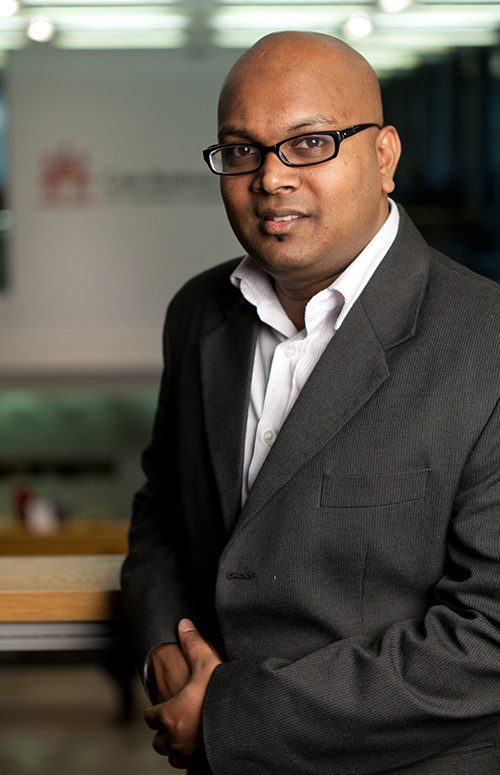Globally M&A activity slowed in the first three-quarters of 2016 after the record-breaking $5.1trn peak in 2015, with the number of deals declining 22% to $2.6trn, according to Dealogic.
However, Asia has bucked this trend with China leading an overseas M&A drive as softening domestic investment returns drive investors to search further afield for high-yielding assets.
The first eight months of 2016 saw 479 Asian outbound M&A deals announced, worth an estimated $200bn, exceeding $199.6bn, the total recorded throughout the entire 2015, according to Mergermarket.
China has led this international M&A charge with 173 deals worth $128.7bn dollars announced to the end of August, representing 64.3 percent of the continent’s deal value.
Where once China focused its M&A sights on the domestic market, Chinese corporate giants are now embarking on an acquisition drive focusing on Europe, says Pascal Quiry, Professor of Finance at business school HEC, where he holds the BNP Paribas chair of corporate finance.
While international acquisitions were once predominantly the domain of Chinese state-owned enterprises, a new surge in outbound M&A from private sector firms is also shaking up the market as they seek to hedge against weakening Chinese growth.
Meanwhile, Quiry points to a new trend on the international M&A landscape; the growing number of very large and complex transactions which can take up to 18 months to complete.

A key development is the emergence of China in the M&A market. China is the number one or number two country by GDP, but their macro size is not reflected at the micro level, so they are catching up by making a sizeable number of acquisitions. For the first time ever last year we had more M&A transactions with links to Asia than to Europe, and Asian-linked M&A is fuelled by China. What we are mainly seeing is acquisitions of non-Chinese firms by Chinese companies. Acquisitions of Chinese companies by non-Chinese companies are pretty rare.
And where are the Chinese buying?
China has been setting its sights on European targets, where recent emblematic transactions have included the acquisition of Kuka, a manufacturer of industrial robots and one of Germany’s most innovative engineering companies, by Midea, China’s leading appliance maker.Are there any other developments that merit close attention?
Something else that is quite significant at the moment is that we are seeing some very large and complex transactions. For example, Dow Chemical in the US has decided to merge with Dupont. This not just a merger of two big US chemical companies: they also plan to split into three parts once they have merged in order to gain the approval of the antitrust authorities. These kinds of deals require a lot of financial, legal, accounting, tax and regulatory expertise to make them happen.These very large transactions are becoming very complex and take a long time. For example, Monsanto and Bayer recently announced their merger plan but they do not expect the deal to be closed before the end of next year. This means that the two companies are taking a big risk as nothing will happen for around 18 months. From time to time, because they are so complex, transactions fail after they’ve been announced but before they are closed.
We had another example when Plaxair, a US company specialising in industrial gas, and its German counterpart Linde announced talks about a merger only for them to collapse only weeks later and leading to the departure of the Linde CFO. This again shows that nowadays it is much more complex to make a merger happen between companies from different countries or different continents, hence the need for a solid and reliable advisor.
What are the main sectors that are dominating M&A activity?
It changes over time. Mergers happen in waves. You may have a lot of activity in one sector over three or four years, and then everybody is busy digesting the mergers, leading to a pause in activity for a few years. And then they may have another look.One sector that was really busy last year was the pharmaceutical industry, mainly because of tax factors in the US. Oil was not active. Financial services were not active because it’s very difficult to make a merger happen nowadays due to the ‘too big to fail’ rule. The sector that has been very active is telecoms. There is a significant number of players in the European market, which is still very fragmented compared to the US market. In Europe there may be 20-25 significant players because most companies are have a presence in one country but are weak in others. But they are starting to make deals. We have seen Orange buying Jazztel in Spain and Free buying assets in Italy, for example. The technology sector is fairly active in the US where technology is strong, less so in Europe.
Many potential deals are often abandoned. What are the reasons for that?
One major reason is antitrust: competition authorities must be persuaded that the end user is protected in the event of a merger or an acquisition. Tax is another factor, mainly in the US, where the government has tried to stop tax inversions and prevented Pfizer from going through with its acquisition target for tax reasons. Most of the time, the tax implications are looked at by M&A advisors in advance, after which they make an assessment as to whether to proceed with a targeted transaction; how frequently this happens cannot be known as such deals have not yet been announced. However, with antitrust issues, you typically announce a transaction provided you have the agreement of the competition authorities. Their assessments will study the impact of a merger on the sector concerned and can take six to nine months or even longer.In the UK has there been any impact from the Brexit vote on M&A activity?
I think UK M&A activity is going to slow down because no one yet knows what form Brexit will take. For many Japanese companies the UK has been seen as a gateway into the European market – but now there is uncertainty about the terms of this access to the market upon completion of Brexit negotiations. So, I would say there’s a short-term freeze. Groups that wanted to buy in the UK to have a platform to sell into Europe are putting their projects aside for the moment and will just wait and see.Finally, are some types of acquisitions more successful than others?
It’s easier to make acquisitions in your own field. It’s easier to integrate. It’s easier to make synergies happen. Diversifications are not liked by investors, as so many diversifications have failed. So, you don’t see a lot of deals that are diversification-led by US or European groups.China has been focusing on European expansion, but looking at the M&A market as a whole, the list of most-targeted countries is much more varied, according to a recent report by the Cass Business School.
Countries in the crosshairs
The M&A Attractiveness Index, which ranks 147 countries according to their ability to attract and sustain M&A investment, is compiled by the School’s Research Centre, the only such facility at a major business school.According to one of the School’s Research Fellows, Naaguesh Appadu, Singapore, the US, the UK, the Netherlands and Germany currently rank the most sought after targets for M&A deals.

How does Cass Business School’s M&A Attractiveness Index rank countries for their capacity to attract and sustain M&A?
We look at 23 indicators and put them into five categories which are regulatory and political, economic and financial, technological, socio-economic and infrastructure. We have updated the data to August 2016 and the results will be released next year. There are not many changes in terms of the top five. We still have Singapore, the US, the UK, the Netherlands and Germany in the top five.Has Brexit had any impact on the UK’s attractiveness?
A bit. Right now I would say people are getting used to it. The exchange rate is the only thing that has affected the index for the moment, but other factors may change in the future. For a company in the UK to go outside and buy, it will be expensive. But for a company from outside the UK, there are two significant factors. Right now in the UK debt is cheap and the pound is low, so people from outside are more likely to do deals in the UK, because if they want to raise capital through debt, it will be very cheap, and then when they buy, they’ll get a very good exchange rate. So, in a way it is good for cross-border UK-inbound activity. There should be quite a few deals happening in the UK.And in terms of the general lessons, what advantages help the top countries in the index achieve their rankings?
Singapore’s ranking is boosted by its very high score in the regulatory and political factor group. And then if you look at Germany, US and the UK, they have infrastructure and assets – lots of assets in terms of buildings, roads, railways and ports, so this has helped to boost their positions. We also consider the ease of doing business, for example if you put in an application to acquire a company or raise capital. Doing business is quite quick in these high-ranking countries. So all these things have been taken into account.How do you see current trends in M&A activity?
Last year we reached a peak of $5.1trn announced M&A deals due to a lot of positive factors. This year, M&A has gone down, but not drastically. There are many factors that have triggered this decline. We had Brexit very recently, China has slowed and we have the US election soon, and all of these factors have created uncertainties that have slowed the pace of M&A. When we talk about M&A, we should also not forget about the IPO market. In the UK we had 95 IPOs in 2015, and this year so far we have had 47 IPOs. The M&A Research Centre has done a study looking at the reasons for IPOs and the follow-on activities from IPOs. And one of the main follow-on activities is M&A, so a lot of companies come to the market to raise capital to finance M&A operations.We also see that there is a rise in terms of mega deals. Between January and September 15, we have had 22 mega deals closing this year, the same number as in the whole of 2015. There will be a few more deals that will be closed by the end of the year, as this year is sure to be an all-time high in terms of mega deals.
Have you got any figures for the volume of deals this year?
In terms of completed deals of over $100m with a change of control, there were 1,041 deals last year, according to Dealogic, and up to mid-September this year we have had 673 deals. In terms of total announced volumes, after last year’s peak of $5.1trn, I would expect it to be close to $4trn by the end of the year. It could come to $3.5trn-$3.9trn, something like that. It will be very close to the 2014 level.And which countries are acquiring and where are the targets?
US buyers have been the most active, and they normally acquire in the US. Chinese buyers traditionally targeted other Chinese firms, but they have started to look at to Europe – in particular the thriving FinTech sector in the UK and Germany.And what other sectors are active?
Pharmaceuticals have recently been active. Among the mega deals I mentioned, Shire group has done a number of deals. And then Teva Pharmaceutical Industries did a huge deal. Telecommunications are still important. Although they don’t do many deals, they normally do very big deals.Is the emerging market’s share of M&A growing?
Emerging markets are always growing in terms of acquisitions due to their growing share of global GDP.Despite a recent surge in pharmaceutical M&A, tech remains the most crucial sector for global deals.
